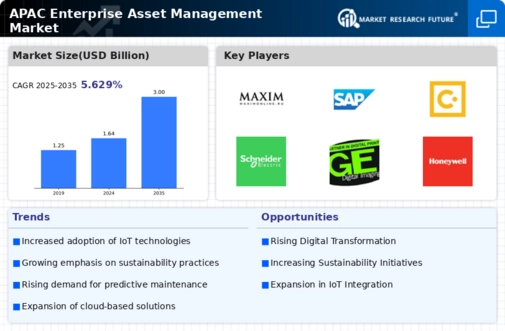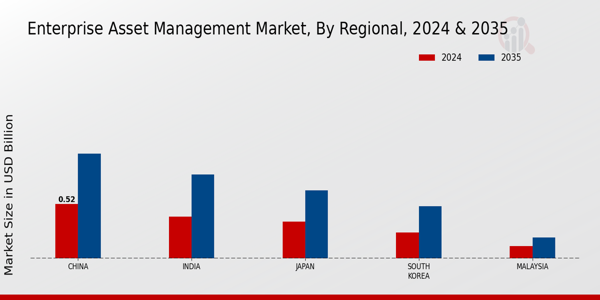The APAC Enterprise Asset Management Market is rapidly evolving, driven by a myriad of factors such as technological advancements, an increasing focus on organizational efficiency, and the necessity for maximizing the lifecycle of physical assets. The competition in this market is becoming increasingly fierce, as organizations recognize the value of integrating sophisticated asset management solutions into their operational frameworks. Providers in this space are continually enhancing their product offerings, aiming to deliver more efficient, cost-effective, and scalable solutions.
The focus is not only on traditional asset management practices but also on innovative approaches involving IoT, AI, and data analytics, allowing organizations to optimize asset utilization and reduce operational costs. As the market matures, players are investing in research and development to respond to evolving customer needs, positioning themselves strategically to capture a larger market share in an increasingly competitive landscape.Maximo has established a strong foothold in the APAC Enterprise Asset Management Market, recognized for its robust and flexible asset management solutions.
The platform stands out due to its ability to cater to diverse industries, including utilities, manufacturing, and transportation, making it highly adaptable to the varying demands of enterprises within the region.
Maximo's strengths lie in its comprehensive functionalities, which include asset lifecycle management, maintenance management, and mobile capabilities, facilitating real-time decision-making and operational efficiency. Additionally, its user-friendly interface and ease of integration with existing IT infrastructure further enhance its appeal to organizations in APAC looking to streamline asset management processes. As a result, Maximo is viewed as a reliable partner for businesses striving to enhance operational efficiency and asset performance.SAP holds a significant position in the APAC Enterprise Asset Management Market, primarily due to its extensive suite of solutions designed to improve asset performance and drive operational excellence.
The company's key offerings encompass SAP EAM (Enterprise Asset Management), which facilitates comprehensive asset management, including maintenance planning, execution, and asset analysis. Known for its scalability, SAP supports organizations of all sizes, helping them maximize asset utilization and reduce downtime. Additionally, SAP is recognized for its innovative capabilities, leveraging emerging technologies such as predictive analytics and machine learning to provide actionable insights for better decision-making. The company has also pursued strategic partnerships and acquisitions to enhance its product portfolio in the region, thereby consolidating its market presence.
These initiatives underscore SAP's commitment to helping businesses in APAC optimize their asset management processes and achieve greater operational effectiveness.


























Leave a Comment